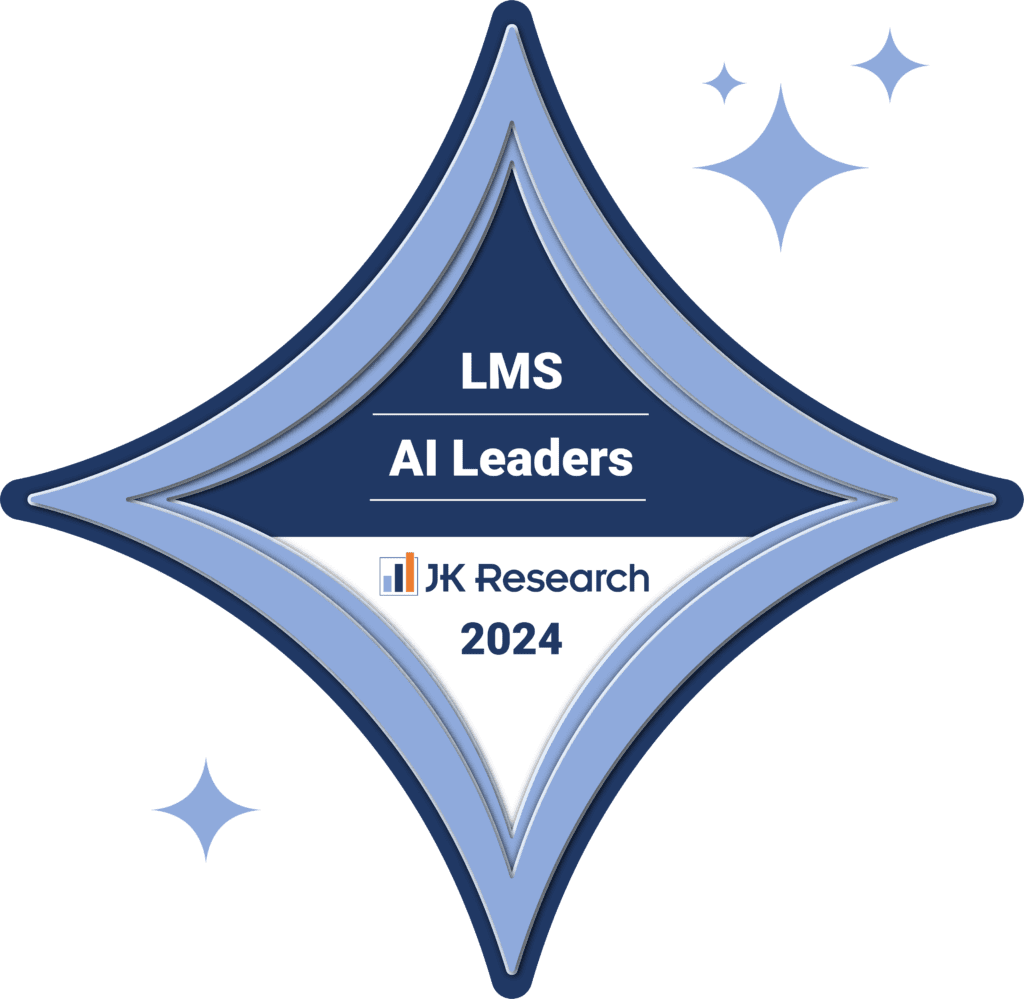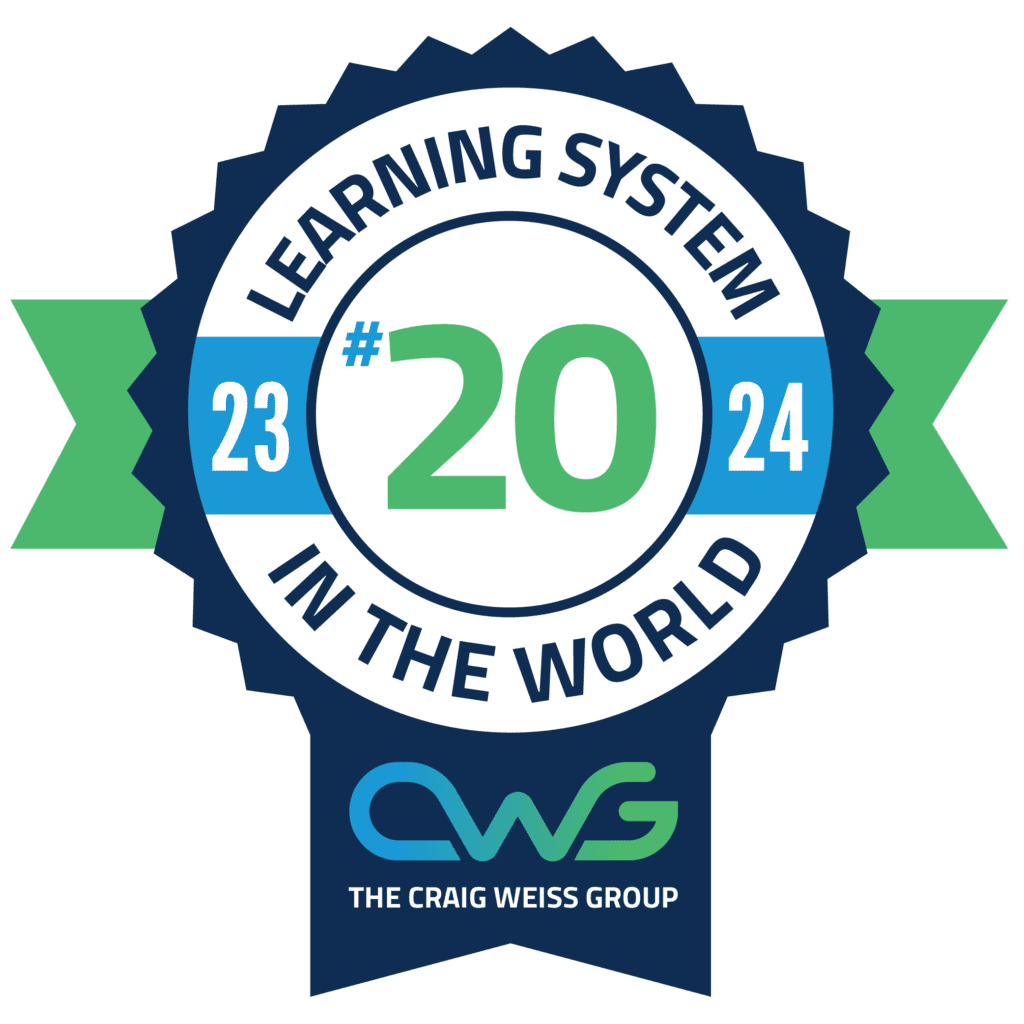Institutional knowledge is the superpower that keeps an organisation optimised, competitive, and stable in the face of change and challenges. In many ways, it’s the foundation of success.
Yet, the insights, expertise, and experience that institutional knowledge alone cultivates is all too often overlooked as opposed to ingrained, allowing organisations to benefit from a knowledge-rich workforce year-in, year-out.
Preserving knowledge ensures organisations benefit from consistent continuity, accelerates onboarding and builds resilience, while avoiding costly setbacks and disrupted workflows…Institutional knowledge matters more than you may think.
In this guide, we’ll explain everything that you need to know about institutional knowledge. What it is. Why it matters and how it differs from other forms of knowledge.
We’ll also take a deep dive into how it gets lost in what can be the hurricane of running any organisation. What to do to capture and retain it. And the tools and strategies you need to employ to optimise it.
So, if you’ve ever wondered how to build and retain knowledge within an organisation, keep reading.👇
What Is Institutional Knowledge?
Institutional knowledge is the collective information an organisation and its employees hold.
It covers all the skills, experiences, insights, education, and pretty much everything else crucial to running a successful organisation in the face of continued challenges.
From unwritten rules to process understanding, cultural nuances to historical data, best practices to knowledge unique to the organisation and its employees, and the organisation, especially knowledge that’s scaled over time.
Imagine an organisation has a long-term employee, someone best-placed to navigate an increasingly complex AI-driven operations process.
Let’s say the process is software deployment. Without their institutional knowledge, the organisation would, potentially, face much disruption before, during and after deployment. 😟
There are three distinct types of institutional knowledge: explicit, implicit and tacit knowledge. We’ve briefly outlined these below.
Three Types of Institutional Knowledge?
Explicit Knowledge
Easily documented knowledge that everyone knows like the back of their hand or, at least, has access to.
These can be policies, procedural guidelines, and L&D materials. Explicit knowledge is, traditionally, stored in a resource bank, one that everyone has access to.
Implicit Knowledge
Information that’s not formally documented but can be identified or inferred from explicit knowledge is known as explicit knowledge.
Knowing how to communicate through digital channels, such as Slack, for instance, or understanding that a specific task must be prioritised, is categorised as implicit knowledge.
Tacit Knowledge
This is knowledge that’s solely gained from hands-on experience and personal interactions.
Tacit knowledge can be nuanced, context-dependent, and difficult to communicate and quantify. For example, the experience a team leader has managing their team is tacit knowledge.
Why Institutional Knowledge Matters
As we touched on in the introduction, institutional knowledge matters.
It’s critical to maintain efficiency, allowing organisations to build and evolve processes that help them to achieve short-and long-term objectives. Sure, innovation is fine, necessary even, but having a solid foundation improves continuity, saves time and prevents errors.
Imagine that someone leaves an organisation…this person may or may not have performed a unique role, one that only they could do, but once they leave, there’ll be a distinct knowledge gap. Managing institutional knowledge efficiently means organisations can avoid serious disruptions and preserve consistency.
So, let’s say that someone with comprehensive knowledge of external regulatory policies and procedures leaves the business. Having someone with the same or similar knowledge ready and able to step into their position and ensure seamless operations, especially in the face of change, will strengthen an organisation.
Examples of Institutional Knowledge
Knowing what institutional knowledge is and why it matters is one thing. To really illustrate why your organisation should cultivate it, we need to explore examples of it. Below are a couple of examples of what institutional knowledge looks like. 🤔
An Experienced Customer Support Rep and a CRM System
An experienced customer support rep has a firsthand understanding of the ins and outs of the CRM they use every day.
This includes undocumented knowledge, like system pain points and problem-solving shortcuts. Knowledge that can only be gained through experience. This has several benefits to organisations, saving them time, money and other valuable resources.
An Experienced Product Manager with in-depth Knowledge of Features
A product manager with significant experience will thoroughly understand product features, holding valuable knowledge, such as why certain features were built and evolved (likely to improve user experience!) and why some features were not.
They’ll also understand why strategic decisions were made, and any technical limitations–information that you won’t find in JIRA tickets.
Additionally, experienced product managers will likely have developed strong relationships with different areas of the organisation. From sales and support to operations and engineering, this degree of knowledge is invaluable to seamless cross-collaboration.
A Facilities Team Member Who Knows How to Restart the HVAC Server
A facilities team member will know that restarting the HVAC server requires a specific manual step-by-step process.
A successful start-up may require trial and error, past failures or informal mentoring. This is something that’s not recorded often.
There may be no one else capable of completing the step-by-step process. If not, it’s probably wise to share how to restart the HVAC system with another party. This mitigates any future snags, should that sole team member leave the business, be on holiday or off on extended sick and an issue arise. 🙌
Institutional Knowledge vs. Other Types of Knowledge
As you’ve probably guessed by now, institutional knowledge is intrinsic to seamless operational efficiency.
It doesn’t matter if you’re a charity, a PLC or an SMB. Understanding how the institution operates, its purpose and mission, and the individual and collective roles everyone has will, without question, elevate performance.
But what about other types of knowledge?
We’ve already defined institutional, implicit, explicit and tacit knowledge above, so let’s review some of the more common knowledge types of organisations have and why they matter.
Procedural Knowledge
Organisations cannot function without procedures.
It’s this ‘know-how’ that ensures tasks are completed correctly, efficiently and consistently, even in the face of disruptions. Whether processing payroll, onboarding a new hire or rebooting a server, in-depth procedural knowledge helps organisations in several ways.
Employees who follow established processes are more likely to deliver consistent, quality work, aligned with the standards the organisation expects.
This improves customer and stakeholder relationships, reduces risk–something that’s especially important to organisations that must remain compliant, while cultivating a scalable system that allows organisations to manage growth without compromising performance.
Technical Knowledge
Technical knowledge powers the core competencies that allow organisations to function, compete, and, of course, innovate.
This practical, specialised knowledge is imperative to helping organisations to build, maintain and improve tools, systems and processes that the organisation relies on to optimise performance.
Knowledge of role, organisation, or industry-specific tools, technologies or processes–the type that usually requires hands-on experience or notable training–is invaluable to continued prosperity.
From analysing data to maintaining factory equipment, strong technical knowledge is a game-changer, improving efficiency and accuracy, driving innovation and problem-solving, supporting scalability and growth, while reducing reliance on costly external help.
Individual Knowledge
The knowledge, skills, experience, and understanding held by each individual employee can elevate or, in the worst-case scenario, sink organisations–and this includes formal knowledge, such as technical training and informal knowledge, i.e., judgement, personal problem solving, and even intuition.
In a broader context, individual knowledge drives performance–how good someone is at website coding, designing products, or whatever their role demands, will directly affect how successful an organisation is.
More than that, individual knowledge promotes innovative thinking and problem solving, fuelling continuous improvement, supports adaptability because only those people who adapt well to L&D may be suited for a different type of responsibility, say leading a team, while strengthening leadership and culture.
Cultural Knowledge
How people communicate, collaborate, make decisions, and achieve objectives makes a big difference to organisations large and small.
This means that understanding different people’s values, behaviours, expectations, and the unspoken norms is essential to improving productivity and workplace happiness.
Exhibiting strong cultural knowledge is a core component of elevating organisations.
Not only will it improve communication, encouraging people to be open-minded and diplomatic, but knowledge of cultural dynamics also reduces conflict and friction, improves employee retention and drives inclusion and equity by making everyone feel welcomed and heard.
More than that, cultural knowledge simultaneously strengthens performance as everyone respects and values one another, encouraging a productive and proactive workplace.
How Institutional Knowledge Gets Lost
Regardless of the type of organisation you work for, one thing is assured: people will leave.
Very, very few people stay with the same employer for their entire career, and even fewer, maybe a minuscule number of people, perform the same job role, with the same duties (if that’s even possible in an ever-changing world) for decades.
This means that organisations must manage employee turnover successfully. (We explore how institutional knowledge gets lost when employees leave in greater detail below.)
There are several knock-on effects that organisations must deal with when someone leaves.
This includes how to deal with lost institutional knowledge. To do this, organisations must first understand how institutional knowledge gets lost. Below are some of the reasons that explain how institutional knowledge gets lost.
Employee Turnover
Organisations must take a proactive, continued approach to preserving institutional knowledge, preventing a swift or gradual loss of knowledge and capability, especially when employees leave.
Let’s say the IT manager departs for pastures new.
If the institutional knowledge they have isn’t shared before his departure, then organisations may just find themselves scratching their head when the server goes down.
Lack of Documentation
This we’ve already alluded to in the implicit knowledge section, but a lack of institutional knowledge documentation can lead to vital information being lost. Institutional knowledge is very much about individual habits and routines.
It thrives in employee-to-employee interactions, something as simple as a conversation by the water cooler. Not documenting this (which often is the case) can lead to the information being lost in the future. 🤐
Unsuccessful Onboarding
Some organisations, especially SMBs without established processes, don’t invest too many resources into effectively onboarding new hires.
This can leave big, gaping knowledge holes. Imagine a product manager with eight years’ experience leaves the organisation, and you don’t have a process for sharing everything (or as much as possible) with the new hire.
The result?
An uphill climb and significant organisation-wide disruption.
Rapid Growth or Restructuring
As organisations evolve, scaling operations, they often disrupt or compromise informal systems or relationships.
With so much happening at once, essential information that’s not written down can become lost. This can fracture or stall day-to-day operations as employees scramble to prioritise and complete tasks.
Leadership Changes
New leadership may discard prior practices without understanding their importance.
Informal information is just that – informal.
Without documentation or proof that, for instance, processes are optimised, new leadership may discard them, believing that they can offer a better, more efficient way of doing things. This may benefit employees in the long run, but in the short term, institutional knowledge may be compromised and lost.
Cultural Shifts
It’s the same with cultural shifts. Over time, valuable, essential information, processes, and even relationships that have been cultivated may become lost or forgotten in favour of a new ethos, one that’s viewed as more progressive.
Whereas this can be beneficial to help organisations achieve their long-term ambitions, any cultural shifts, let’s say, from a risk-adverse model to an experiment-focused one, can lead to misunderstandings, increased mistakes, wasted resources, and even frustrated employees – all of which disrupt performance.
How to Capture and Retain Institutional Knowledge
Now that we know how institutional knowledge is lost, it’s time to look at how to mitigate this. And yes, you need a plan to safeguard institutional knowledge. Here’s how you can make it happen…
Implementing a Robust Learning Platform
One of the surest ways to capture and retain institutional knowledge is to implement a robust learning platform, like Thirst.
By integrating these platforms into workflows, organisations provide employees of all descriptions with a structured information-sharing environment, one that embeds L&D into the organisation’s culture.
Creating a Learning Culture
Encouraging employees to share knowledge, insights and best practices, making this part of their day-to-day routine, will help institutional knowledge to flourish.
Organisations can achieve this by regularly sharing information, engaging in cross-functional meetings, mentorship programs, and much more. By integrating knowledge sharing into the company culture and you’ll ensure that information flows readily across silos and departments.
Use Case Studies and Storytelling
Institutional knowledge is often rich in reasoning, context and history.
This doesn’t neatly fit into process documentation. Using case studies and storytelling, organisations can clearly illustrate the ‘why’ of the decisions taken and processes implemented.
These narratives are especially useful when onboarding new employees, helping them to understand an organisation’s culture and values.
Document Key Processes and Workflows
Now, we’ve already highlighted the importance of documentation, but it’s worth reiterating.
Documenting key processes and workflows is one of the most reliable, transparent ways of deploying, managing, measuring and iterating L&D and, by extension, institutional knowledge.
Complete Exit Interviews and Knowledge Transfer Sessions
Employees who leave take valuable knowledge and experience with them.
By completing structured exit interviews and knowledge transfer sessions – especially for critical roles, organisations can help capture undocumented expertise, efficiently transferring knowledge and mitigating bias.
Tools and Strategies to Capture Institutional Bias
Capturing institutional bias is a critical step to building a more transparent, equitable, proficient, productive, and inclusive organisation.
Biases–whether explicit or implicit–can seep into an organisation’s policies, culture, even data systems, often without an organisation being consciously aware of it.
Identifying and addressing these biases with specific tools and strategies.
By challenging assumptions and examining patterns, organisations can make more informed decisions, cultivate workplace inclusivity, and, ultimately, improve internal operations and external impact.
Below is an overview of the tools and strategies organisations can use to capture institutional biases.👇
Learning Platforms with Custom Pathways
Learning platforms can highlight knowledge gaps, behaviour patterns and blind spots embedded in organisational L&D, therefore playing a key role in capturing and addressing institutional bias.
From highlighting content gaps and curriculum biases, for instance, if L&D lacks a focus on leadership skills or DEI awareness, to understanding data-driven insights into learning behaviour, even promoting self-reflection to understand bias awareness, learning platforms with custom pathways deliver a more focused, valuable learning experience.
AI-Assisted Content Capture Tools
AI-assisted content capture tools provide a powerful way for organisations to identify institutional bias. How? Well, they analyse the language, structure and patterns with L&D training, highlighting assumptions, not facts, challenging norms to help businesses promote knowledge and inclusion.
AI-based LMS platforms can also provide valuable bias insights into how groups engage with content, while personalising learning pathways to cater to, for example, specific demographics, like leadership and senior management, to see if any algorithmic bias reflects institutional structures.
Internal Documentation Platforms
Internal documentation platforms act as a mirror to organisational thinking, demonstrating what organisations value and what they don’t. For instance, significant documentation explaining the importance of microlearning in L&D demonstrates that organisations adopt this way of learning.
Platforms, like Confluence, Notion or Guru, store internal documentation, acting as key data sources to promote everything from workflows to policies. Should documents or processes not be readily available or accessible, it may indicate that they’re not valued by the organisation.
Microlearning and Internal Podcasting
Microlearning and internal podcasting are especially effective tools to capture and address institutional bias. Why? They create accessible, bite-sized and authentic learning experiences.
This creates focused L&D experiences, often in minutes, targeting specific bias areas, such as unconscious bias.
Podcasting offers a similarly digestible learning experience, creating a space for candid conversations that may uncover institutional bias, while encouraging listener interaction, therefore getting a more rounded viewpoint.
Version-controlled SCP Libraries
Standard Operating Procedure (SCP) libraries are another common means of capturing institutional bias.
These libraries do this by preserving the history, evolution, and context of the original practices, increasing their transparency over time.
With every version control, an SCP is recorded, detailing any changes made and when. This allows organisations to track changes and who they’re made by, challenge assumptions, while revealing institutional biases that otherwise remain hidden.
Better still, many SCP libraries allow annotations with comments, making it easy for valuable context to be added, something that will show decision-making rationale, providing greater insights into why institutional bias has emerged and how to avoid it in the future.
Final Thoughts
Knowledge is power!
The more knowledge an institution holds, the more capable and powerful it becomes.
Just look at multinational corporations, like Apple, Google and Exxon Mobile. They have the power to shape the world. And they’ve acquired a fair proportion of this power by focusing on institutional knowledge.
Knowing how to define institutional knowledge, why it matters, the circumstances that explain how it gets lost and how it differs from other knowledge will help organisations to deliver powerful value to everyone with whom they interact with.
When distilled down to a small or medium-sized organisation, strong institutional knowledge will benefit an organisation’s people, processes, and systems, touching everything from decision-making to unwritten cultural norms, processes and procedures to DEI standards, transition continuity, and more.
Capturing and retaining institutional knowledge effectively will maintain operational efficiency and continuity, drive innovation, and cultivate a more resilient, adaptable organisation. 🚀
Invest in L&D, leveraging the right tools, and you’ll build a robust foundation to allow knowledge to flourish, optimising performance, while cultivating a happy workforce.
Got 2 Minutes?
If your organisation is struggling with retaining institutional knowledge, Thirst has the solution. 🔥
Thirst is an AI-powered learning platform that helps L&D teams of all sizes automate onboarding, simplify compliance, and keep company knowledge all in one place. (without extra admin!)
Take a guided tour today and see Thirst in action.
For more e-learning insights, resources and information, discover the Thirst blog.
You may also enjoy:
LMS Analytics: What to Track and Why It Matters | What Is Informal Learning? A Complete Guide for L&D Teams | Performance Improvement Plan: What to Include (+ Free Template)







